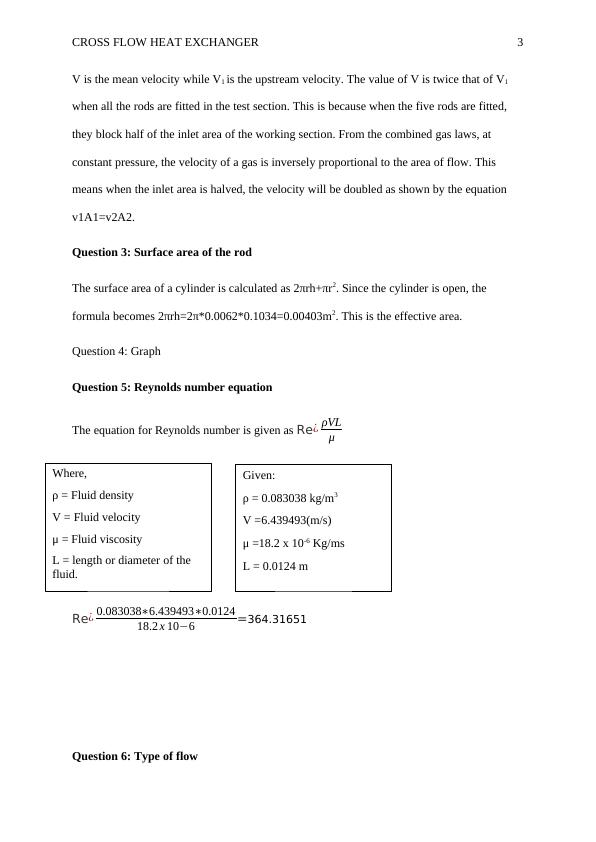Cross-Flow Heat Exchanger Experiment
Identify the attendance date and name of the experiment you need to undertake via Blackboard (tab: Laboratory).
7 Pages1054 Words65 Views
Added on 2022-12-18
About This Document
This document discusses a cross-flow heat exchanger experiment, including calculations of density, velocity, surface area, Reynolds number, and heat transfer coefficient. It also explores the effects of rod placement on convective cooling and Nusselt number. References are provided for further reading.
Cross-Flow Heat Exchanger Experiment
Identify the attendance date and name of the experiment you need to undertake via Blackboard (tab: Laboratory).
Added on 2022-12-18
ShareRelated Documents
End of preview
Want to access all the pages? Upload your documents or become a member.
Fluid Dynamics: Classical Mechanics, Dimensional Analysis, Shock Wave and Detonation, Fire Plumes
|10
|2195
|36
Fluid Mechanics solutions
|5
|677
|239
Thermodynamics and Fluid Mechanics: Solutions and Calculations
|8
|775
|298
Hewitt and Robert Flow Regime | Assignment
|8
|853
|18



